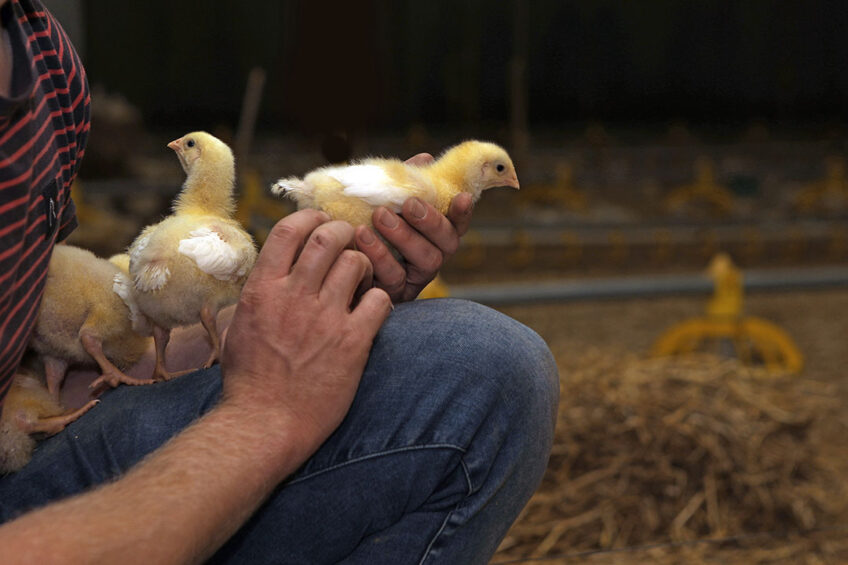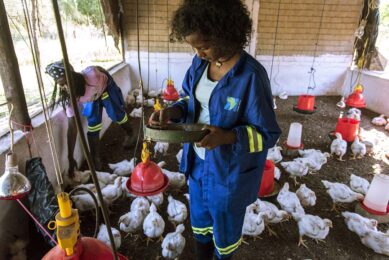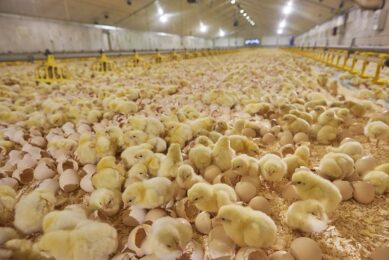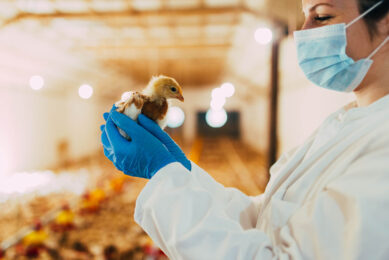Antibiotic use in UK poultry continues to fall

Figures released by the UK government’s Veterinary Medicines Directorate show antibiotics used in chickens fell from 17.5mg/PCU in 2019 to 16.3mg/PCU last year, although this is higher than the record minimum of 9.9mg/PCU set in 2017. The industry target is 25mg/PCU.
Statistics for antibiotics used in turkeys showed a marked decline last year, falling from 42mg/PCU in 2019 to just 25.7mg/PCU, almost half the industry target of 50mg/PCU. Since 2014, the turkey sector has reduced mg/PCU by 88.2%, demonstrating the commitment of the sector to upholding the UK’s stance of tackling antimicrobial resistance.
In the laying hen sector, members of the British Egg Industry Council (BEIC Lion Code), which represents 90% of the laying hen industry (and includes breeders and pullets) continued to be below the 1% bird days and no Highest Priority Critically Important Antibiotics (HP-CIAs) were used for the 4th consecutive year.
EU lifts ban on using animal by-products for poultry feed
The EU has lifted its ban on the use of animal by-products for animal feed. The proposed change in legislation allows processed animal protein from pigs to be used in poultry feed and from poultry to be used in pig feed. Read more…
Overall, the laying sector recorded a total of 3.1 tonnes of antibiotic active ingredient use in 2020. 0.47 actual bird days treated/100 birds was recorded for the period, representing a reduction on the reported values in previous years.
The Lion Training Passport online portal
For the first time, information was collected through an online portal, which had facilitated the analysis of the data and improved feedback to subscribers, producers and vets. It has also made it possible to share data on reasons for medication with prescribing vets. Results showed that there continues to be a focus on disease prevention, including widespread vaccination programmes.
It is also a requirement for all farms to have a written biosecurity and veterinary health plan and, in addition, the Lion Training Passport provides a common training standard, including welfare, biosecurity and medicine usage. From January 2021, the Lion Training Passport, which includes medicine training, has been a required standard for all farms.
Confient through transition of laying system
There are currently some significant structural changes taking place in the laying hen sector with a move away from enriched colony cage production for retail supply to barn production. The sector believes that while this will create challenges, it is confident that, through a continued focus on disease prevention and antibiotic stewardship, the sector will remain below is ongoing target of keeping below 1% bird days and 0.05% for HP-CIA’s.
Targets task force
The results are part of the “one year on” Responsible Use of Medicines (RUMA) Targets Task Force 2 (TTF2), which looked at 10 sectors across poultry, pigs, ruminants and aquaculture. It found that the unprecedented nature of the past year had resulted in significant industry challenges, including supply chain resources, infrastructure issues and labour difficulties. Some sectors, such as gamebirds, had reduced production, while others, such as the pig sector, experienced considerable supply chain issues with animals remaining on farm for longer than normal, which affected sectoral targets. The onset of environmental issues related to global climate change have had impacts in some sectors, too.
Biosecurity breaches a major factor in disease outbreaks
In intensive livestock farming, a good biosecurity protocol is essential as potentially harmful diseases can inflict huge damage. And it is not difficult to implement these protocols; the challenge is to live up to them as the human factor poses the greatest risk. Poultry World looks into some tools that can help raise awareness. Read more…
Targets met and initiatives launched
Cat McLaughlin, RUMA chair and chair of the RUMA Targets Task Force 2, said: “Despite an exceptional 12 months, there have been some great achievements realised in year 1 of the second set of RUMA Targets Task Force targets, which is testament to the hard work and commitment across all sectors. As well as striving to achieve or sustain key targets, a number of important industry initiatives have been launched including Farm Vet Champions and the Medicine Hub. It is important to remember that the targets are not about driving towards zero antibiotic use; antibiotics are needed when necessary as a tool to treat sick animals and to improve and maintain animal welfare.”
”…we have achieved huge reductions in the use of antibiotics …”
The VMD Veterinary Antimicrobial Resistance and Sales Surveillance (UK-VARSS 2020) report showed that UK antibiotic sales for food-producing animals have reduced by 52% with sales recorded at 62.3mg/kg. Abigail Seager, VMD CEO, said: “Working closely with the farming industry and the veterinary profession, we have achieved huge reductions in the use of antibiotics since 2014 and we are seeing reductions in resistance as well. These successes are testament to the cooperation between vets and farmers in promoting the responsible use of antibiotics.”
Join 31,000+ subscribers
Subscribe to our newsletter to stay updated about all the need-to-know content in the poultry sector, three times a week. Beheer
Beheer








 WP Admin
WP Admin  Bewerk bericht
Bewerk bericht